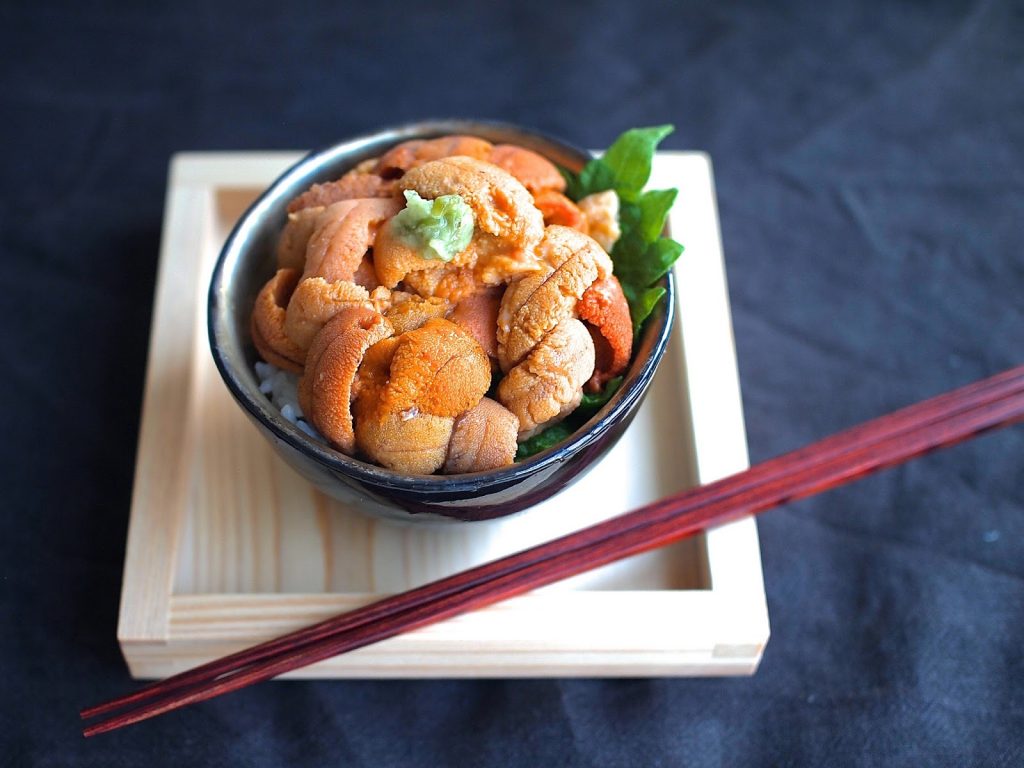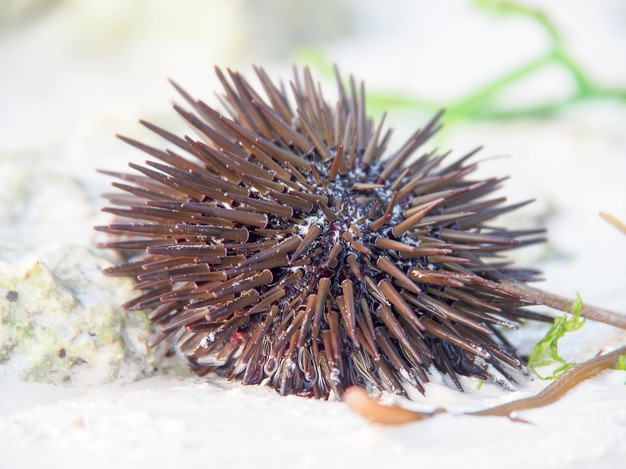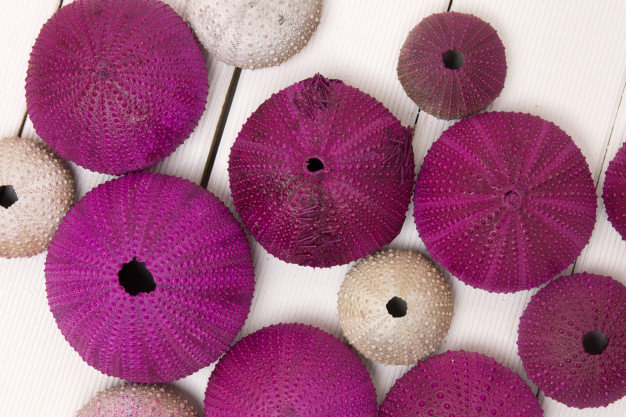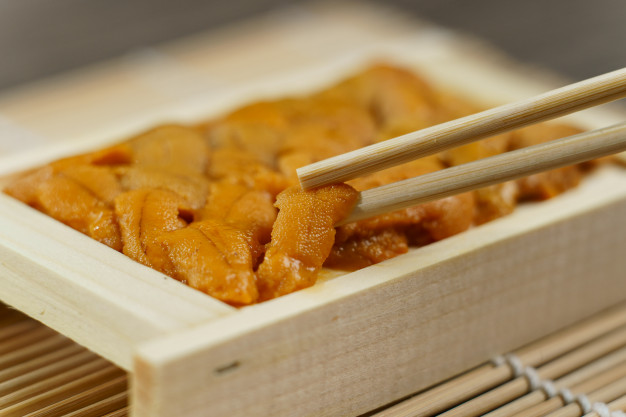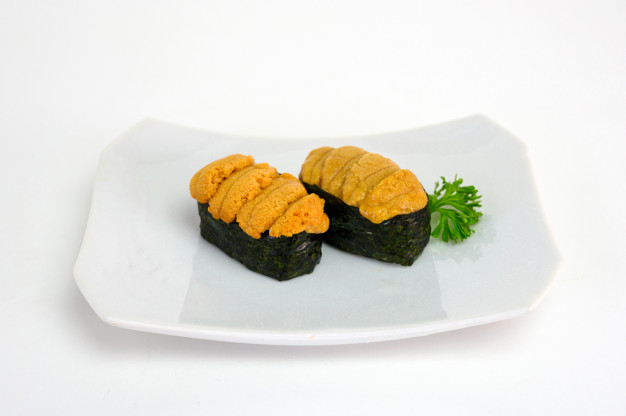Have you tried cooking a sea urchin or as they call it Uni? It’s a Japanese traditional dish with a very specific delicate taste which will make you really feel the sea on your taste buds.
Meeting a sea urchin in the middle of the beach can bring painful consequences for your bare feet, but on the table it is quite a delicacy available now even in the western kitchen.
Although they can already be found in the fish shops somewhere at the end of November, it is in the first few weeks of the year when the sea urchins are at their best time of the year, offering us a delicious bite that is full of pure sea flavor, intense but at the same time elegant, fresh and with a very particular texture. Either raw or lightly cooked, it is very easy to enjoy it at home.
What really is a sea urchin?
Equinoids (Echinoidea), commonly known as sea urchins and in the past were called sea hedgehogs, are a class of Phylum echinoderms. They are globose or discoidal in shape like the sand dollar, lacks any legs and have a distinctive external skeleton, covered only by the outer epidermis, consisting of numerous calcareous plates joined together rigidly forming a shell, in which the agile spikes are located. They live all over the seabed, up to 2500 meters deep. They have been very abundant in various geological periods since their appearance in the Ordovic era. They comprise about 950 living species of this family.
In the case of sea urchins, we find interesting little animals with a more or less flattened balloon shape and the body is completely covered with spikes, of different thicknesses and lengths. They have a color between black, brown, purple and greenish, depending on the species and age, and their size is usually around 5-10 cm in diameter, although there are larger ones.
They are formed by calcareous plates joined together forming a hard shell on which the spikes are supported, which are sharp and in some cases poisonous. They inhabit the seabed and rocky areas, being able to be found at great depths, which makes it difficult to catch them without equipment or boat.
Sea urchins are found in ocean waters around the world and their consumption dates way back to ancient times, when it was already highly appreciated as a food. In Europe and US sea urchins can be found in the Atlantic usually.
Properties and uses in the kitchen
The edible part of the sea urchin is located inside the shell. Each animal has radially distributed five glandular formations, the gonads, also called buds. They have a slightly elongated shape and are orange in color, being able to vary from the most intense red to more yellowish tones.
They should not be confused with ROE of other marine species. In sea urchins, the gonads are more like a tongue, both in shape and in their irregular texture. They are very fleshy, delicate and creamy, with a taste which is musky with great intensity, and somewhat sweet.
The meat of the sea urchin should be consumed at the moment when the shell is opened, the fresher the better, although we can also find them canned on the market too. Because of its delicacy, one of the best ways to taste them is raw, as they usually do in Japan, where uni is a common ingredient of sushi and sashimi or used to spice up noodle dishes and soups.
Opening a sea urchin is easy, you just have to be careful with the spikes and make a good cut around the body to separate the shell in two parts.
Ideas on how to cook sea urchin
You have to think of the sea urchin as we would with caviar or with a good piece of the best bonito or good bluefin tuna. It is an exquisite product in itself, very delicate, requiring maximum freshness and minimal manipulation so as not to completely spoil its properties.
Sea urchin Ramen
Like caviar, it can be enjoyed with small crumbly bread toast or on blinis. If you don’t want to consume it raw, you can incorporate it into a sashimi dish or prepare nigiris with its meat, and it is also excellent to enrich a shrimp tartar, prawns or fish meal, or you can serve with spider crab meat too. Sea urchin or uni is usually eaten with chopsticks which is quite common among Japanese people as you would guess.
In hot dishes its creamy texture provides a powerful addition to sauces and other specialty dishes. A traditional way of cooking them is in a style similar to stuffed scallops, adding the gonads to a light bechamel enriched with cava that is used to fill the shells before grating them. They are also quite a delicacy if they are served with hollandaise sauce or mayonnaise.
Sea urchin Sushi
The water inside the shell can be used to enrich broths, sauces and soups, although it must be used in moderation because it can be very intense in taste.
Another classic way of cooking with sea urchins is scrambled with eggs, or adding some vegetables such as asparagus trigueros. The silky intensity of its meat is perfect to completely transform the texture and taste of eggs, creating a dish both simple and delicious. We just have to control the cooking point so that it does not overcook.
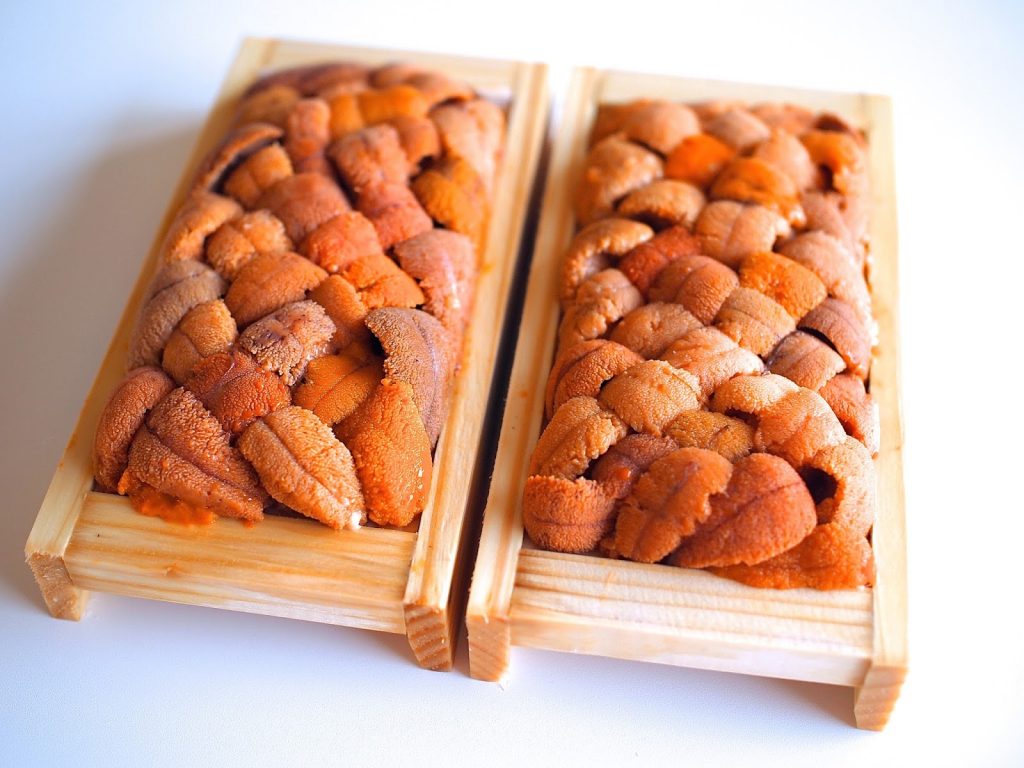
Uni packed in a chip box
Now let’s get to the Japanese uni recipe.
The sea urchin (Uni), inhabits the coast up to 30 m. deep, between rocks, ponds left by the tide or natural holes or dug by them to protect themselves from the currents. It is covered with shells, stones and algae as a defense, and to avoid intense light. It feeds on algae, plankton, snails and mussels.
They are highly appreciated in gastronomy. The most appreciated part of sea urchins are the female gonads, which have to be a colorful orange color. It has a deep sea flavor when they are very fresh, an indispensable condition for using them in sushi.
Uni: Japanese Sea Urchin Recipe
As we mentioned Sea Urchin is called also Uni, and It’s very popular as sushi, sashimi and donburi in Japan. There are mainly two types of Uni as Bafun-Uni (intermediate sea urchin) and Murasaki-Uni (naked sea urchin). Both of them are glossy orange or yellow in color, have rich, creamy taste, distinctive flavor, and melt in your mouth. Uni is a luxury ingredient that tastes very different depending on its quality, so If you eat Uni raw, you have to choose fresh and high quality Uni.
Japan considers sea urchin to be one of the most sublime delicacies out there and often includes it in many of its dishes. They call it ‘uni’, which strictly speaking, refers to the gonads of the animal. Each sea urchin contains 5 of these small pieces or orange buds. You can make delicious’ maki sushi ‘ with them.
INGREDIENTS
- 250 g sushi rice
- 5 parts rice vinegar
- 2 parts white sugar
- 1 part Salt
- 2 sheets of nori seaweed
- 9 pcs of sea urchin (yolks)
- 4 sisho leaves
- Wasabi
- Soy sauce
PREPARATION of Uni Japanese style
Wash the sushi rice well until it loses the starch and the water comes out clean.
Then put the rice in a pot, stir a little to air it and pour the water: exactly the same amount of water as rice.
Cook over medium heat for two minutes with the pot covered. Lower the heat to a minimum and let the rice boil for another 13 minutes, approximately. Remove from heat and let stand for 10 more minutes without removing the lid. Slightly heat the vinegar (without it coming to a boil) and dissolve in it salt and sugar.
Now we remove from heat and let it cool down. Season with this mixture the rice without stirring it much.
Then spread the nori seaweed on a specific mat for making sushi, covered with cling film so that it does not stick. Spread the rice on half of the nori seaweed and roll up helping yourself with the sushi mat. Cut the roll into portions, crush the inner rice slightly from each of them and lay out the yolks
Top with a pinch of wasabi, serve on some sisho or shiso leaves and accompany with a little soy sauce.
- 250 g sushi rice
- 5 parts rice vinegar
- 2 parts white sugar
- 1 part Salt
- 2 sheets of nori seaweed
- 9 pcs of sea urchin (yolks)
- 4 sisho leaves
- Wasabi
- Soy sauce
- We wash the sushi rice well until it loses starch and the water comes out clean.
- put the rice in a pot, stir a little to air it and we pour the water: exactly the same amount of water as rice.
- Cook over medium heat for two minutes with the pot covered.
- lower the heat to a minimum and let the rice boil for another 13 minutes, approximately.
- remove from heat and let stand for 10 more minutes without removing the lid.
- slightly heat the vinegar (without it coming to a boil) and dissolve in it salt and sugar.
- We remove from heat and let it cool down.
- Season with this mixture the rice without stirring it much.
- We spread the nori seaweed on a specific mat for making sushi, covered with cling film so that it does not stick.
- Spread the rice on half of the nori seaweed and roll it up with the sushi mat.
- We cut the roll into portions, crush the inner rice slightly from each of them and lay out the yolks of the sea urchins.
- Top with a pinch of wasabi, serve on some shiso leaves and accompany with a little soy sauce.
Enjoy with family and friends.
Have you ever tried making this Uni Japanese sea urchin recipe at home? Let us know in the comments below.
